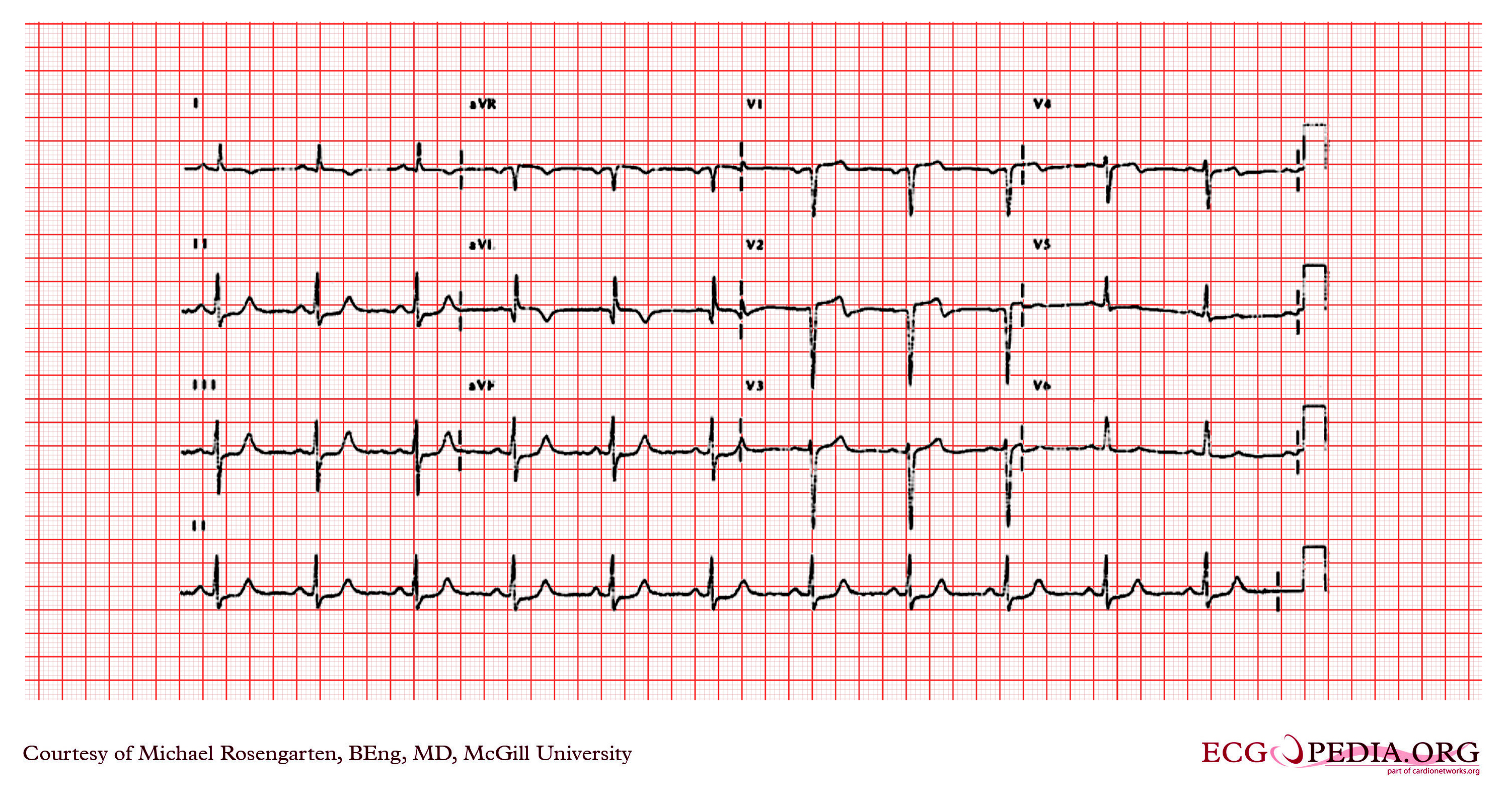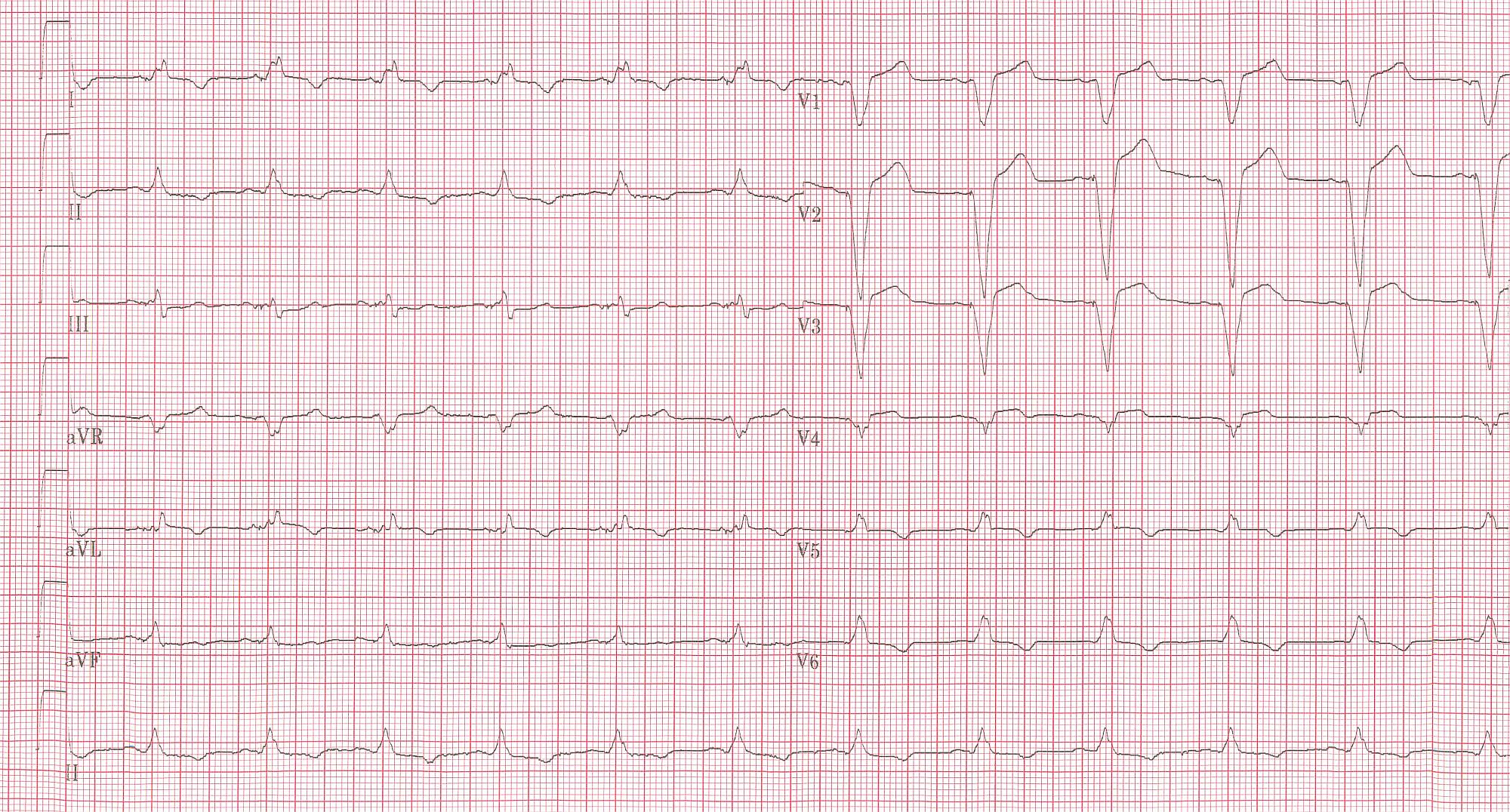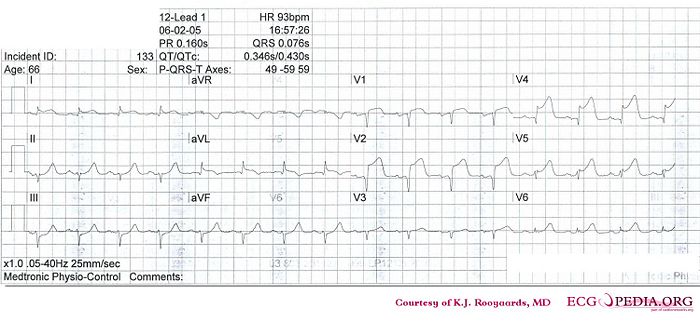Lateral myocardial infarction
|
ST Elevation Myocardial Infarction Microchapters |
|
Differentiating ST elevation myocardial infarction from other Diseases |
|
Diagnosis |
|
Treatment |
|
|
Case Studies |
|
Lateral myocardial infarction On the Web |
|
Directions to Hospitals Treating ST elevation myocardial infarction |
|
Risk calculators and risk factors for Lateral myocardial infarction |
Editor-In-Chief: C. Michael Gibson, M.S., M.D. [1]
Synonyms and keywords: Lateral MI
Overview
A lateral myocardial infarction (MI) is a heart attack or cessation of blood flow to the heart muscle that involves the inferior side of the heart. Inferior MI results from the total occlusion of the left circumflex artery. Lateral MI is characterized by ST elevation on the electrocardiogram (EKG) in leads I and aVL.
EKG Examples
Shown below is an EKG demonstrating sinus rhythm and a QRS with a rightward axis, as well as wide Q waves in leads I and aVL as well as a poor R wave progression across the anterior chest leads. There is also slight ST elevation in leads I,aVL, and T wave inversion in the lateral leads. The EKG is consistent with a lateral wall myocardial infarction.

Copyleft image obtained courtesy of, http://en.ecgpedia.org/wiki/Main_Page
Shown below is an EKG demonstrating sinus rhythm. The remarkable feature is the poor R wave progression in the V1 and V2 leads and the ST elevation and T wave changes in leads V1 to V4 and I and aVL. The cardiogram suggests an anterior/ lateral MI possibly acute. There is also terminal P wave negativity in V1 suggesting a left atrial abnormality.

Copyleft image obtained courtesy of, http://en.ecgpedia.org/wiki/File:E209.jpg
Shown below is an EKG demonstrating acute myocardial infarction in in a patient with a pacemaker and LBBB. Concordant ST elevation in V5-V6 are clearly visible. There is discordant ST segment elevation > 5 mm in lead V3.

Copyleft image obtained courtesy of,http://en.ecgpedia.org/wiki/Main_Page
Shown below is an EKG demonstrating findings in the same patient as in the first example 2 months before the myocardial infarction. Normal LBBB pattern.

Copyleft image obtained courtesy of,http://en.ecgpedia.org/wiki/Main_Page
Shown below is an EKG showing ST elevation MI.

Copyleft image obtained courtesy of, http://en.ecgpedia.org/wiki/File:De-KJcasus12.jpg